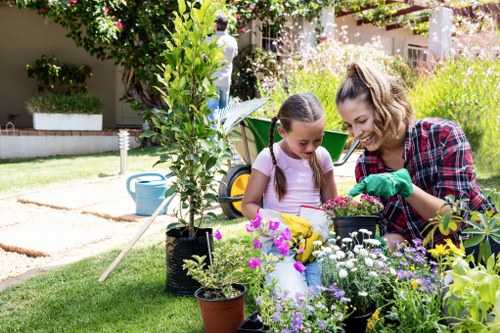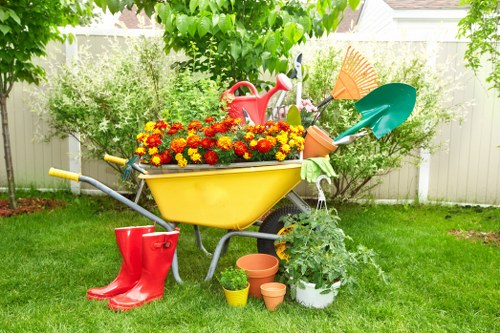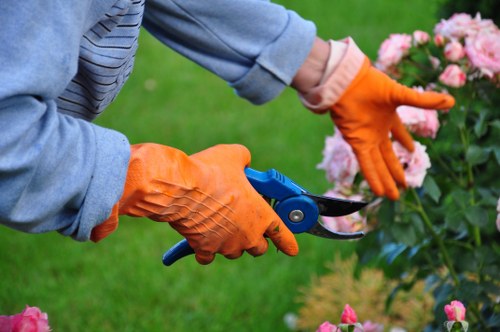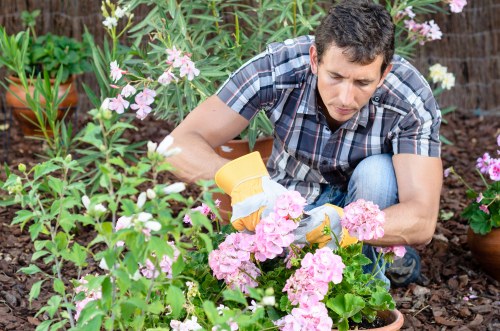Comprehensive Guide to Garden Maintenance in Victoria

Introduction to Garden Maintenance
Maintaining a beautiful garden in Victoria requires a blend of knowledge, dedication, and the right techniques. The unique climate and soil conditions in Victoria offer both challenges and opportunities for garden enthusiasts. Whether you're a seasoned gardener or a beginner, understanding the fundamentals of garden maintenance is crucial for achieving a lush and vibrant outdoor space.
Victoria's diverse weather patterns mean that garden maintenance must be adaptable. From the warm summers to the cool, wet winters, each season demands different care strategies. By implementing effective maintenance practices, you can ensure your garden thrives year-round.
In this article, we'll explore various aspects of garden maintenance in Victoria, including soil preparation, planting schedules, pest control, and more. Our goal is to provide you with actionable tips and insights to help you create and sustain a garden that not only looks stunning but also supports local biodiversity.

Understanding Victoria's Climate
Victoria experiences a temperate climate with four distinct seasons. The region typically has mild summers, cool winters, and moderate rainfall throughout the year. This climate is conducive to a wide variety of plants, but it also requires gardeners to be mindful of seasonal changes to maintain healthy gardens.
Seasonal Considerations
Spring: Spring is the ideal time for planting new flowers and vegetables. The soil temperature starts to rise, promoting seed germination and root growth. It's also a good time to prepare garden beds by adding compost and mulch.
Summer: During the hot months, gardeners should focus on watering, weeding, and protecting plants from excessive heat. Using shade cloths and proper irrigation techniques can help prevent plant stress.
Autumn: Autumn is perfect for planting trees and shrubs. It's also a time to clean up garden debris and prepare beds for winter. Adding mulch can insulate plant roots against colder temperatures.
Winter: In winter, maintenance shifts to protecting sensitive plants from frost and snow. Pruning dormant trees and shrubs can promote healthy growth in the spring.

Soil Preparation and Health
Healthy soil is the foundation of a thriving garden. In Victoria, the soil can vary from sandy to clayey, each requiring different management strategies. Regular soil testing can help determine nutrient levels and pH balance, guiding gardeners in making necessary amendments.
Soil Testing
Conducting a soil test is essential to understand your garden's specific needs. Tests can reveal deficiencies in essential nutrients like nitrogen, phosphorus, and potassium. Based on the results, you can add appropriate fertilizers or organic matter to improve soil health.
Organic Matter and Composting
Incorporating organic matter such as compost enriches the soil by adding essential nutrients and improving its structure. Composting kitchen scraps and garden waste is an environmentally friendly way to create nutrient-rich soil amendments.
pH Levels
The pH level of the soil affects nutrient availability to plants. Most garden plants prefer a slightly acidic to neutral pH. If your soil is too acidic or alkaline, you can adjust it by adding lime or sulfur accordingly.

Choosing the Right Plants
Selecting plants that are well-suited to Victoria's climate ensures better growth and lower maintenance. Native plants are particularly advantageous as they are adapted to the local environment and require less water and care.
Native vs. Non-Native Plants
Native plants support local ecosystems by providing habitats for pollinators and wildlife. They are also more resistant to local pests and diseases. Non-native plants may require more resources to thrive and can sometimes become invasive.
Flowering Plants
Popular flowering plants in Victoria include lavender, roses, and daisies. These plants add color and attract beneficial insects. Regular deadheading and pruning can promote continuous blooming.
Vegetable Gardens
For those interested in growing their own food, vegetables like tomatoes, lettuce, and carrots are well-suited to Victoria's climate. Proper spacing, watering, and pest management are key to a successful vegetable garden.

Watering and Irrigation Practices
Efficient watering is vital for garden maintenance, especially during Victoria's dry spells. Implementing proper irrigation systems can conserve water and ensure plants receive adequate hydration.
Types of Irrigation Systems
- Drip Irrigation: Delivers water directly to the plant roots, reducing evaporation and water waste.
- Sprinkler Systems: Suitable for larger gardens, providing uniform coverage but can be less efficient.
- Soaker Hoses: Allow water to seep slowly into the soil, ideal for vegetable beds and flower gardens.
Water Conservation Tips
To minimize water usage, consider the following tips:
- Water early in the morning or late in the evening to reduce evaporation.
- Use mulch to retain soil moisture and suppress weeds.
- Choose drought-resistant plants that require less water.
- Collect rainwater using barrels for garden use.
Monitoring Soil Moisture
Regularly check the soil moisture levels to ensure plants are neither overwatered nor underwatered. Using a soil moisture meter can provide accurate readings, helping you adjust your watering schedule accordingly.
Pest and Disease Management
Protecting your garden from pests and diseases is crucial for maintaining plant health. In Victoria, common garden pests include aphids, caterpillars, and slugs. Effective management strategies can prevent infestations and minimize damage.
Integrated Pest Management (IPM)
IPM is a holistic approach that combines biological, cultural, and chemical methods to control pests. It emphasizes prevention and uses environmentally friendly techniques whenever possible.
Biological Controls
Introducing beneficial insects like ladybugs and predatory beetles can naturally reduce pest populations. Companion planting, such as planting marigolds to deter aphids, is another effective biological strategy.
Cultural Practices
Maintaining garden hygiene by removing debris and diseased plants helps prevent pest and disease outbreaks. Crop rotation and selecting disease-resistant plant varieties are also beneficial cultural practices.
Pruning and Trimming
Regular pruning and trimming are essential for shaping plants, promoting growth, and preventing diseases. Proper techniques can enhance the overall appearance and health of your garden.
When to Prune
The best time to prune varies depending on the plant species. Generally, late winter or early spring is ideal for most trees and shrubs, while summer pruning can help manage growth and remove dead or diseased branches.
Pruning Techniques
Use sharp, clean tools to make precise cuts. Focus on removing branches that are crossing, rubbing, or growing inward. This improves air circulation and sunlight exposure, reducing the risk of fungal infections.
Tools and Maintenance
Invest in quality pruning tools like bypass pruners, loppers, and saws. Regularly clean and sharpen your tools to ensure effective and safe pruning.
Mulching for Garden Health
Mulching is a simple yet effective practice that offers numerous benefits for garden maintenance. It enhances soil fertility, retains moisture, and suppresses weed growth.
Types of Mulch
- Organic Mulch: Includes materials like wood chips, straw, and compost. Organic mulch breaks down over time, enriching the soil.
- Inorganic Mulch: Consists of materials like gravel, plastic sheeting, and rubber. Inorganic mulch is durable and low-maintenance but does not improve soil fertility.
Benefits of Mulching
Mulching helps in:
- Reducing soil erosion caused by wind and water.
- Maintaining consistent soil temperatures.
- Minimizing water evaporation, thereby conserving moisture.
- Preventing the growth of weeds by blocking sunlight.
Applying Mulch
To apply mulch effectively, spread a layer 2-3 inches thick around plants, avoiding direct contact with stems or trunks to prevent rot. Replenish mulch as needed to maintain its effectiveness.
Weed Control Strategies
Weeds compete with garden plants for nutrients, water, and sunlight, making weed control a vital aspect of garden maintenance. Effective strategies can keep your garden beds clean and promote healthy plant growth.
Manual Weeding
Hand-pulling weeds is an organic method that ensures precise removal without harming desirable plants. It's best done when the soil is moist, making it easier to extract the entire root system.
Mulching
As mentioned earlier, mulching inhibits weed growth by blocking sunlight and creating a barrier that prevents weed seeds from germinating.
Cultural Practices
Maintaining a dense planting pattern can naturally reduce weed proliferation by limiting the space available for weeds to establish.
Fertilizing Your Garden
Fertilizing provides essential nutrients that support plant growth and productivity. Understanding the specific needs of your garden plants ensures that they receive the right nutrients at the right time.
Types of Fertilizers
- Organic Fertilizers: Include compost, manure, and bone meal. They release nutrients slowly and improve soil structure.
- Inorganic Fertilizers: Consist of synthetic formulations that provide immediate nutrient availability.
Application Methods
Fertilizers can be applied in various ways, including broadcasting, side-dressing, and foliar feeding. Choose the method that best suits your garden's needs and the type of fertilizer used.
Frequency of Fertilization
The frequency depends on the plant species and the type of fertilizer. Generally, applying fertilizer during the growing season ensures plants have consistent access to necessary nutrients.
Garden Tools and Equipment
Having the right tools is essential for efficient garden maintenance. Quality tools can make tasks easier and more effective, contributing to a healthier and more attractive garden.
Essential Garden Tools
- Hand Tools: Such as trowels, pruners, and weeders for precise gardening tasks.
- Power Tools: Including lawnmowers, trimmers, and leaf blowers for large-scale maintenance.
- Watering Equipment: Like hoses, sprinklers, and watering cans to ensure proper hydration.
Maintenance of Tools
Regularly clean and store your tools to prevent rust and wear. Sharpen blades and replace damaged parts to maintain their effectiveness.
Choosing Quality Tools
Investing in high-quality tools ensures durability and better performance. Consider ergonomic designs to reduce fatigue during prolonged use.
Seasonal Garden Tasks
Different seasons bring specific tasks that contribute to the overall health and beauty of your garden. Staying organized with a seasonal maintenance schedule can help manage these tasks efficiently.
Spring Tasks
- Prepare garden beds by clearing debris and adding compost.
- Plant new annuals and perennials.
- Prune spring-flowering shrubs after blooming.
Summer Tasks
- Regularly water and mulch plants.
- Control weeds and pests.
- Harvest vegetables and fruit.
Autumn Tasks
- Plant bulbs for spring blooms.
- Clean up fallen leaves and plant debris.
- Prune trees and shrubs as needed.
Winter Tasks
- Protect sensitive plants from frost.
- Plan garden layout for the upcoming year.
- Maintain and repair garden tools and equipment.
Creating a Sustainable Garden
Sustainability in gardening promotes environmental health and conserves resources. Implementing eco-friendly practices can make your garden more resilient and beneficial to the local ecosystem.
Composting
Composting organic waste reduces landfill contributions and provides rich soil amendments for your garden. Setting up a compost bin is an easy way to recycle kitchen scraps and garden waste.
Rainwater Harvesting
Collecting rainwater helps conserve water and provides a natural, chemical-free source for watering plants. Use rain barrels or other storage systems to capture and store rainwater.
Natural Pest Control
Avoid using chemical pesticides by opting for natural alternatives like neem oil, insecticidal soaps, and introducing beneficial insects. These methods protect your plants while maintaining ecological balance.
Enhancing Garden Aesthetics
Aesthetic appeal is a significant aspect of garden maintenance. Incorporating design elements and maintaining plant health can create a visually stunning outdoor space.
Plant Arrangement
Arrange plants based on their height, color, and blooming seasons to create a harmonious and dynamic garden layout. Grouping plants with similar needs together simplifies maintenance.
Adding Structures
Incorporate garden structures like trellises, arches, and pergolas to add depth and interest. These features also provide support for climbing plants, enhancing both functionality and beauty.
Lighting
Installing garden lighting highlights key features and extends the usability of your garden into the evening. Solar-powered lights are an energy-efficient option for illuminating pathways and plants.
Maintaining Lawn Health
A well-maintained lawn is a cornerstone of any garden. Proper lawn care practices ensure a green, healthy, and inviting space.
Lawn Mowing
Mow your lawn regularly to maintain an optimal height. Cutting the grass too short can stress the turf, while allowing it to grow too tall can lead to weed invasion and thatch buildup.
Weed and Pest Control
Keep weeds at bay by mowing, hand-pulling, and using appropriate herbicides if necessary. Monitor for common lawn pests like grubs and treat them promptly to prevent damage.
Fertilization and Aeration
Fertilize your lawn according to seasonal requirements to provide essential nutrients. Aerating the soil annually helps improve water and nutrient penetration, promoting deeper root growth.
Creating a Garden Maintenance Schedule
Organizing your garden tasks with a maintenance schedule ensures that no aspect of your garden is neglected. A well-planned schedule helps distribute tasks throughout the year, making maintenance more manageable.
Monthly Task Breakdown
- January: Focus on summer watering and pest control.
- February: Begin preparing for spring planting.
- March: Start planting early spring vegetables and flowers.
- April: Continue planting and prepare garden beds.
- May: Maintain watering schedules and monitor plant health.
- June: Address summer pests and preserve soil moisture.
- July: Enjoy gardening during cooler months and plan for autumn.
- August: Begin autumn planting and continue maintenance.
- September: Plant trees and shrubs, begin fall cleanup.
- October: Prepare gardens for winter by mulching and pruning.
- November: Finalize winter preparations and protect sensitive plants.
- December: Review garden plans and maintain tools.
Using Gardening Tools and Apps
Leverage tools like gardening calendars and mobile apps to track your maintenance schedule. These resources can provide reminders and tips tailored to Victoria's climate, ensuring you stay on top of your garden tasks.
Adjusting Your Schedule
Be flexible with your maintenance schedule to accommodate unexpected weather changes or plant needs. Regularly assess your garden's condition and adjust tasks as necessary to maintain optimal health and beauty.
Professional Garden Maintenance Services
While DIY garden maintenance is rewarding, sometimes professional assistance is beneficial. In Victoria, numerous garden maintenance services offer expertise in various aspects of gardening, ensuring your garden remains in excellent condition.
When to Hire Professionals
- For complex tasks like major pruning, landscaping, or installing irrigation systems.
- When facing persistent pest or disease issues that require specialized treatment.
- To save time and ensure consistent maintenance, especially during busy seasons.
Choosing the Right Service
Select a garden maintenance service that understands Victoria's unique gardening challenges. Look for companies with experienced staff, positive reviews, and a range of services that match your garden's needs.
Benefits of Professional Services
Hiring professionals can enhance your garden's health and aesthetics, provide expert advice, and free up your time to enjoy your outdoor space. They can also offer tailored maintenance plans that align with your specific goals and preferences.
Conclusion
Garden maintenance in Victoria involves a comprehensive approach that addresses climate-specific challenges, soil health, plant selection, and sustainable practices. By following the strategies outlined in this guide, you can cultivate a beautiful and resilient garden that thrives throughout the year.
Remember, a well-maintained garden not only enhances the beauty of your home but also supports local ecosystems and provides a peaceful retreat for you to enjoy. Stay dedicated to your garden, adapt to seasonal changes, and don't hesitate to seek professional help when needed.
Contact us today to learn more about our garden maintenance services and how we can help you create the garden of your dreams in Victoria.